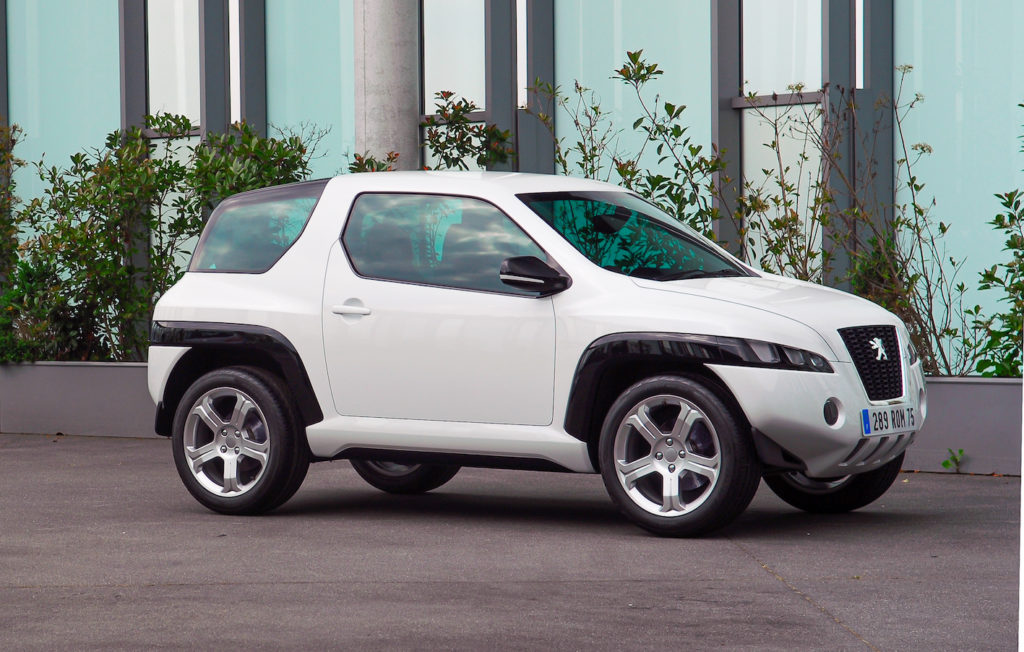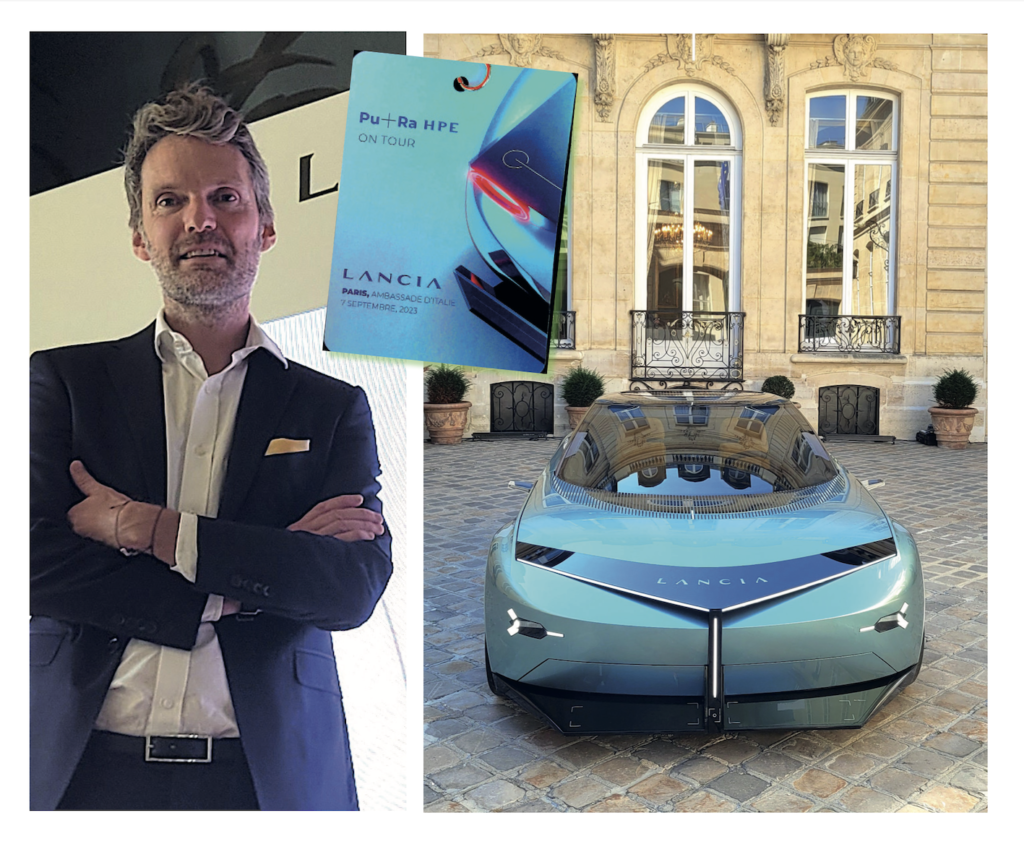
Lancia is back in Europe, and therefore in France, with 20 dedicated sales outlets and 80 after-sales outlets, the latter shared with those of DS and/or Alfa Romeo, for example. “Lancia is now back in France. This country means a lot to the brand, because of the attraction its inhabitants have for Italian style and design, and because of the importance of the B segment in this market. Our ambition is to make Lancia a desirable, respected and credible brand, by placing France among the leading markets for Lancia in Europe”, declared Luca Napolitano, CEO of the Lancia brand.
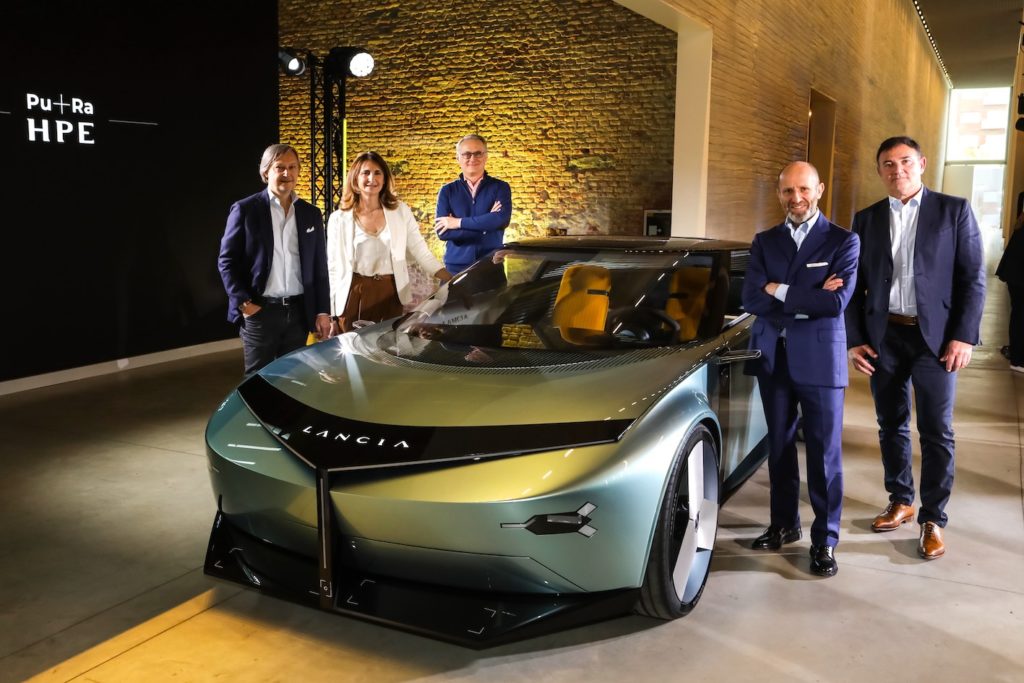
France is therefore one of the 6 European countries, apart from Italy, that will see the return of Lancia in 2024 with the arrival of the new Ypsilon. This will be followed by the Gamma in 2026 and the Delta in 2028, both 100% EV. But on the design front, what has happened since 16 January 2021, when the Stellantis Group was created and the return of the Italian brand was announced? To find out, we spoke to Frédéric Duvernier, Lancia’s head of exterior design, who reports to Jean-Pierre Ploué, the Italian brand’s head of design.
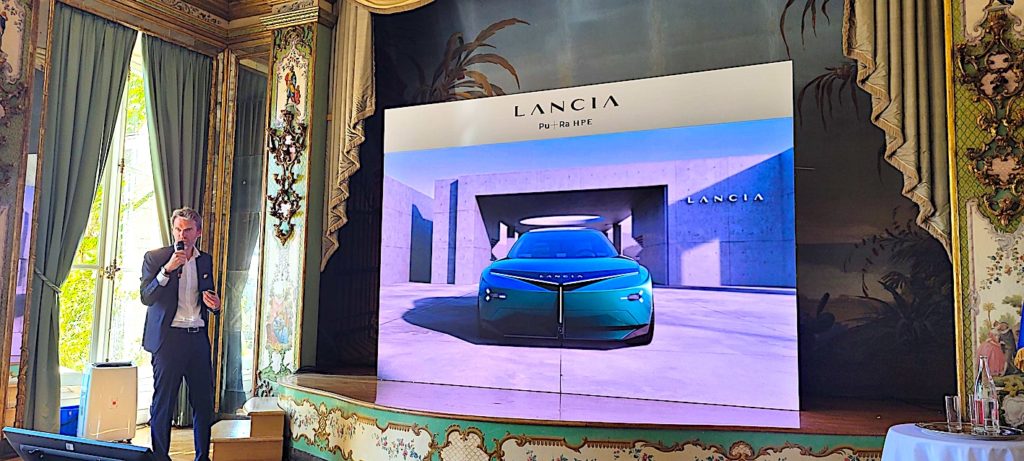
Let’s rewind the film to the year 2021. You’ve been tattooed with the Citroën chevrons…
“Yes, I was in charge of phase advance and concept cars at the time. I’d been with Citroën for 17 years, and my last job was following up the Oli concept car. I had an extraordinary time with different design directors of the brand: Jean-Pierre Ploué (2000-2009, top left), Thierry Métroz (2010-2012, right) then Alexandre Malval (2012-2018, bottom left) and Pierre Leclercq (since 2018).”
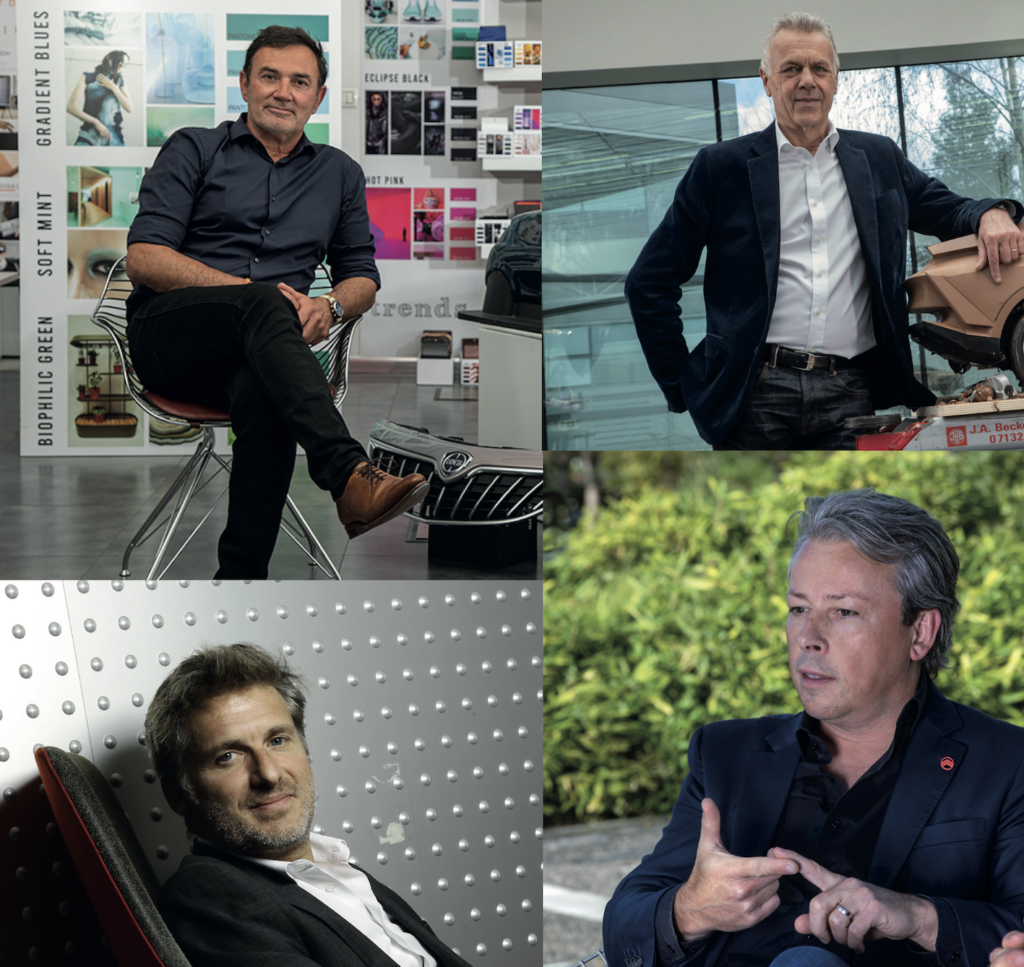
You then decided to take part in the crazy project to relaunch the Lancia brand. What happened when Stellantis was formed?
“When the Stellantis Group was formed in 2021, everything had already been decided behind the scenes. Personally, when I heard and saw what was happening with a probable merger, I did some soul-searching and imagined what would happen next. Spontaneously, I thought of Lancia, I wanted to go to this brand which was only present in Italy. It seemed to me that a fantastic adventure was in the offing”.
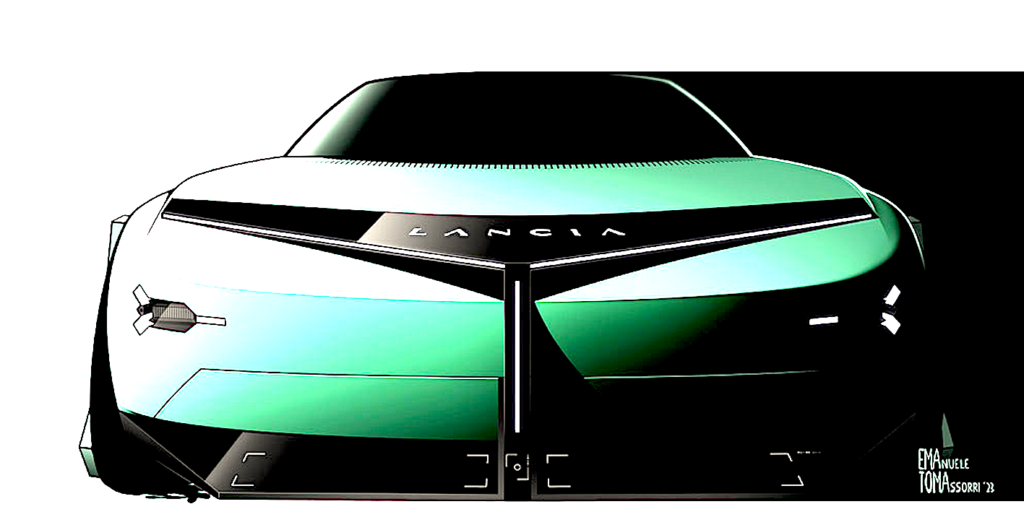
It’s a bit cheeky to give up a brand that’s more than a hundred years old for one that’s just as old, but almost extinct!
“Lancia seemed like an obvious choice, and I wanted to be part of the adventure.”
Did Jean-Pierre Ploué initiate your visit?
“For Lancia, it was me who approached him. We went for lunch together to talk about it and we agreed on many points, notably that Lancia was a fantastic brand. I proposed a project to him, because it wasn’t just an opportunity to relaunch a brand, it was a time to experiment with new ways of working, in terms of organisation, in terms of the team and the way we work.”
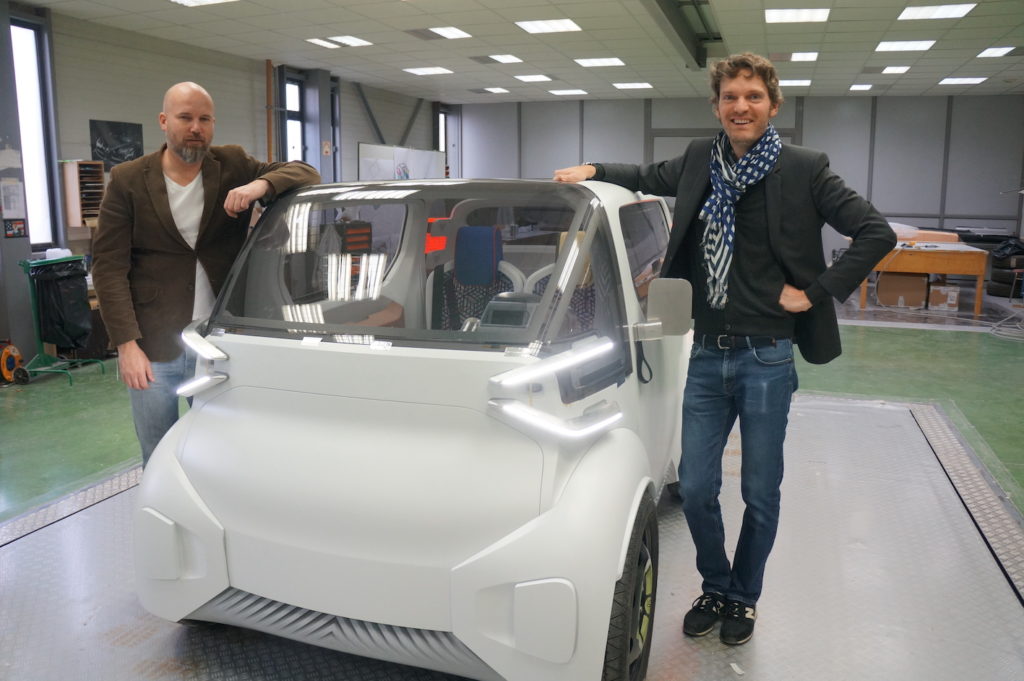
At Citroën, Frédéric Duvernier was head of the phase advance and concept car department, here with Pierre Icard, designer of the Ami One concept.
It’s a commando approach!
“When you arrive in a team that’s already been formed, you have to come to terms with the tools and the methods, and all that takes time to put in place. You can’t change that overnight. On the other hand, with a blank sheet of paper, it’s more exciting and efficient.”
What was Lancia design in 2021?
“There was only one colour and materials department to manage the production life of the Ypsilon, solely for Italy. There was no longer a studio, and as there was nothing left, no team, no designer, no modeller, no range manager, I seized the opportunity to generate the team I wanted in terms of skills, hierarchy and organisation”.
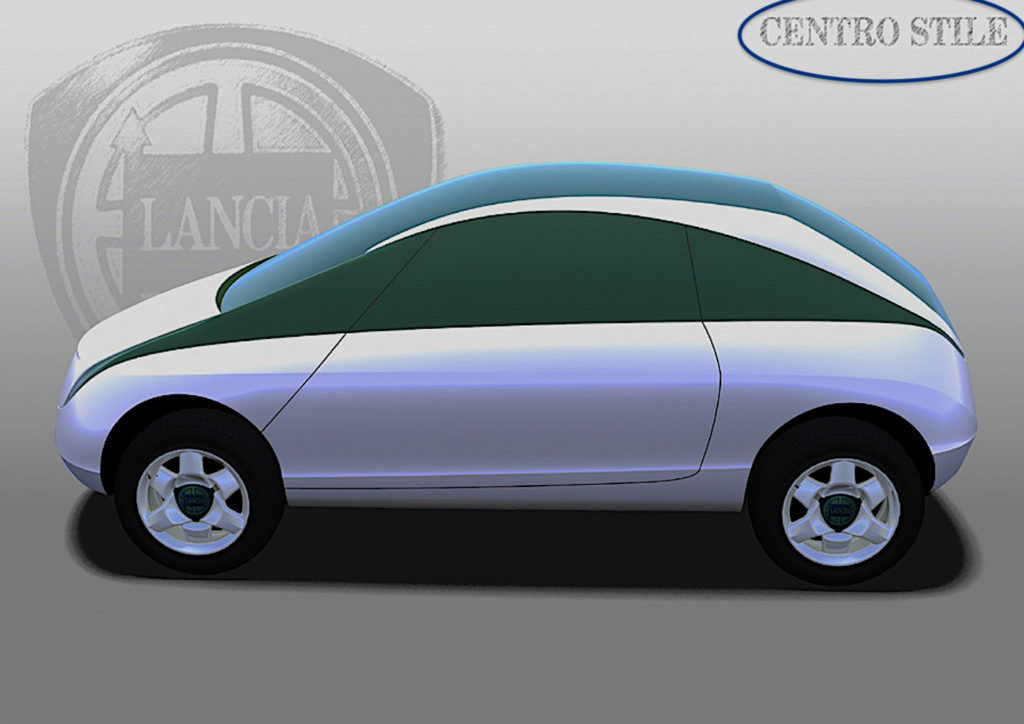
Were you referred to a team of Italian designers?
“No, not at all! As you know, design is a very cosmopolitan world. In interior design, we have two Indian designers and two French ones. In exterior design we also have several nationalities, and it’s the same for the modellers. Since last March, we’ve added Laura Brunet, a colour and materials designer, to our team. We also rely on support from outside our team for modelling resources. We have a multicultural team.”
Is this team dedicated to Lancia or is it cross-functional at Stellantis?
“It is Lancia and only Lancia. Within Stellantis, each team is dedicated to a brand. Jean-Pierre Ploué is responsible for brand design, Gianni Colonello (below) for interior design and I for exterior design. I also have Frank Saint Joanis as my deputy, who is responsible for the execution of the cars, because it’s not just a question of design and product. Each future model has to be built to a high standard. To achieve this, we have a team of excellent 3D modellers at our disposal.”
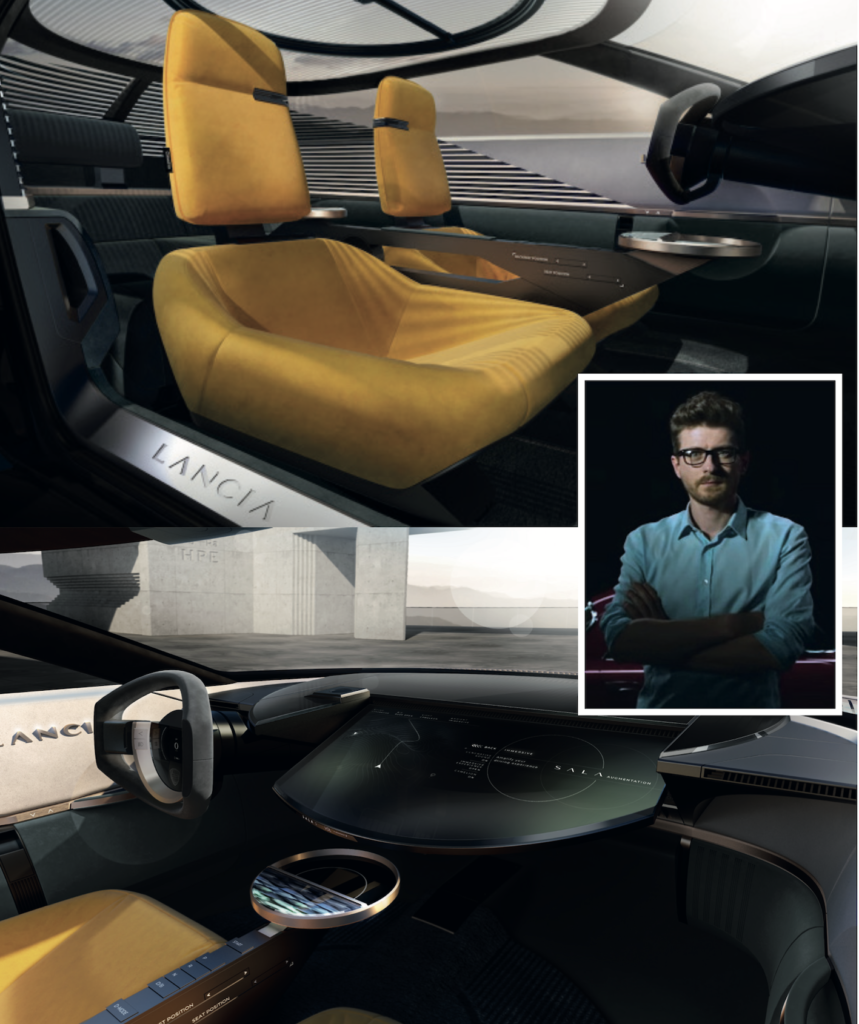
Is digital the only source of creation for you?
“No, we always go through the Clay mock-up stage, which is done in-house, because we don’t subcontract the Clay… we execute it using in-house talent managed by Stéphane Strouven’s team. In terms of design, the Clay provides added value for fine-tuning the quality of execution. It’s a very flexible and fast tool.”
The formal language announced by the Pu+Ra HPE concept car rejects straight lines in favour of curvaceous, muscular volumes. Is it more complex to master?
“It’s actually a lot more complicated, both in 3D and in clay, because it requires specific expertise. For the side of the concept, we spent two weeks sanding intensively to achieve the result. Contrary to what you might think, the simplicity of the formal language requires a lot of hard work, including several weeks of 3D scanning. Simplicity requires exceptional expertise”.
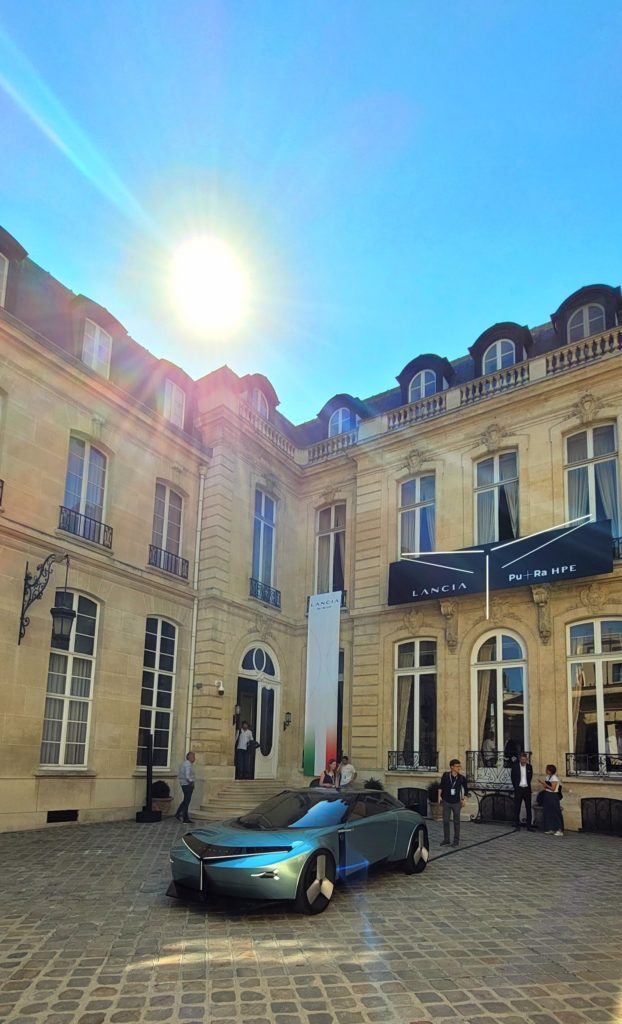
Lancia is part of the Stellantis Premium division, along with Alfa Romeo and DS. DS seems to be your main internal competitor… You talk to the DS design team?
“Of course, and it’s a very simple process, based on monthly meetings, or even weekly when there’s an urgent matter to be dealt with. We meet with Thierry Métroz but also with Alejandro Mesonero -Romanos from Alfa Romeo and their teams to make sure that everyone stays within their own perimeter and that we don’t do the same thing, but that also applies to Opel, Peugeot and all the brands in the group.”
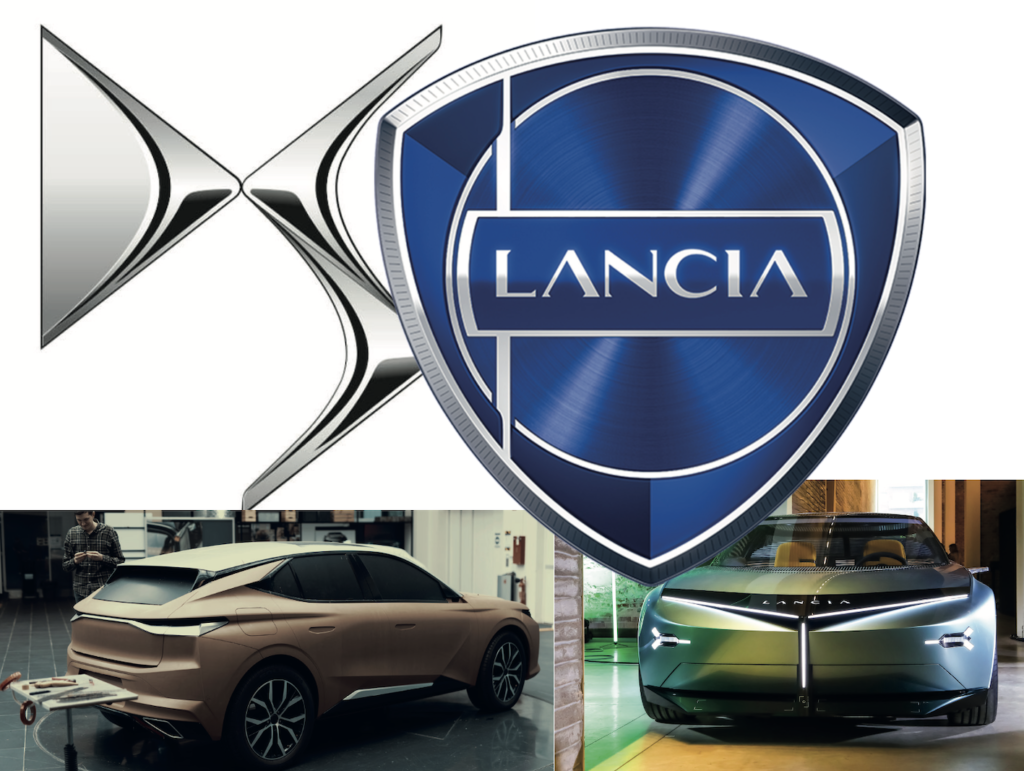
Differentiation in the Premium segment can’t be easy, especially with DS, if you put the sporty side of Alfa Romeo aside.
“From my point of view, it’s no more DS than Alfa Romeo! Internally, nobody steps on each other’s toes. We have design manifestos that manage the style language, but also everything that counts for each of the brands: identity, graphics, colours, territory, and so on. From the outside, you’re probably wondering how the products will fit together within the group, but for me, there’s no doubt that in terms of design, Lancia will be very different from DS or Alfa Romeo.”
In terms of products, you have announced the Ypsilon for 2024, the Gamma for 2026 and the Delta for 2028. Do you see these three products as ancient history?
“The Ypsilon is finished and will be presented next year. It’s still a great story! As for the Gamma, we’re right in the middle of it and we’re well advanced. The styling is practically frozen at this stage. For the Delta, we’ve also made progress on the architecture. We’re at the early phase. It will be based on a new platform and obviously we have major ambitions for this model, which is undoubtedly the most eagerly awaited Lancia. We’re working hard to make it a success.”
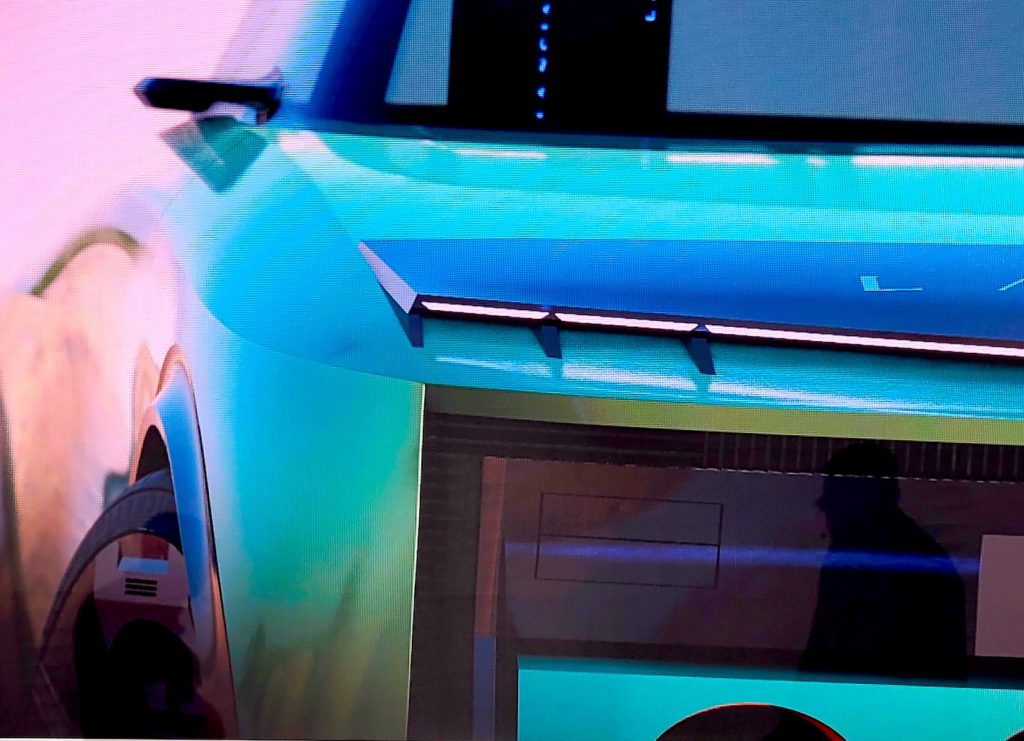
Why is the Delta arriving so late and not before the Gamma?
“These are decisions that don’t belong to design, and probably not to the brand either. They are decisions linked to the size of our Stellantis group and the industrial implementation of all the programmes. Imagine 14 brands, all the production sites, all the product plans, all the vehicles that are programmed, all the development and related expenditure, it’s a colossal amount of work. When you fit all this together from a group point of view, you have to imagine a giant abacus and each little ball has to find its place. The two years between each Lancia model is very good because you avoid having a gap between each launch, and that’s very important. The best possible fit for our brand is the one that has been defined.”
Will you have any exclusives, whether in terms of platforms, infotainment, etc.?
“Of course, even in terms of platform geometry…”
What does this mean?
“We’ll be able to modify a few dimensional elements, such as the track and wheelbase for our own models, and generate a number of specific features that will make Lancias special.”
Including in relation to DS?
“Yes, but also in relation to Peugeot and all the other brands. This is important, because without generating these specific features, you can’t differentiate the models. Obviously, we need to generate specific features in terms of styling and silhouette, but also in terms of the platform, not forgetting infotainment with our SALA system, which will be exclusive to Lancia.”
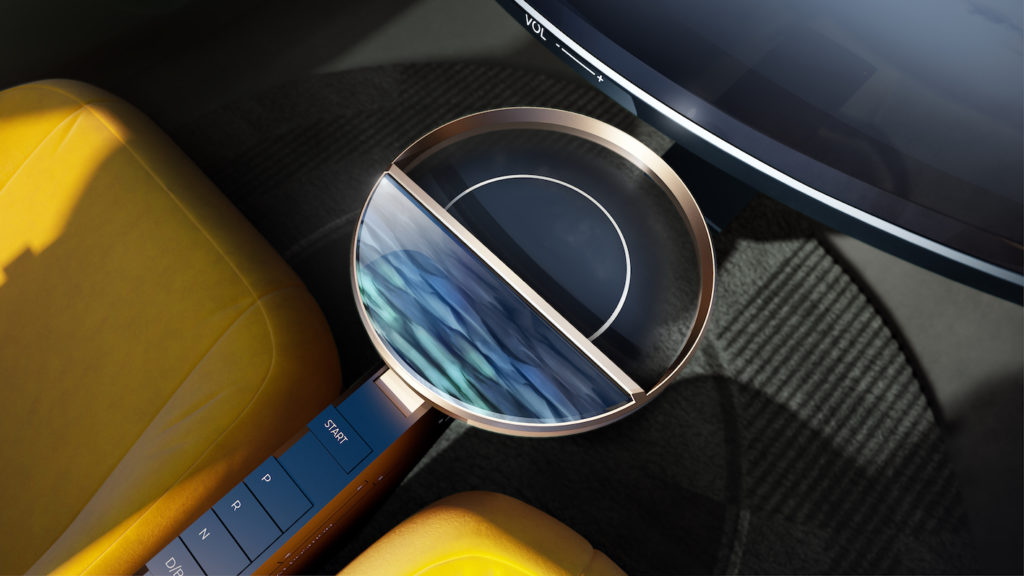
With your concept, you’re breaking away from the world of tall cars. So the Lancias will be low-slung cars?
“It will depend on the product. We’re doing everything to stay as low as possible, and as compact as possible too. We won’t be making the longest vehicles in each segment, that’s obvious.”
It’s even official, with the brand announcing that the future Gamma will be 4.60 metres long. That’s shorter than the Peugeot 408…
“For Lancia, it’s important to be in line with its history. A Gamma wasn’t that generous in terms of size, a Delta was 3.70 m, which is quite compact! There’s a certain notion of agility, lightness and efficiency anchored in the DNA. And even sportiness. It’s too early to say, but it’s obvious that Lancia’s sportiness cannot be forgotten overnight!”
The first phase of the brand’s relaunch involved three products: Ypsilon, Gamma and Delta. Are you already in the second phase?
“So, no! We’re creating the first three vehicles, and the next phase is… after 2028, we’re not there yet. We’re already concentrating on the Delta, the third vehicle in the Lancia renaissance. We’re a small team and our first priority is efficiency!”
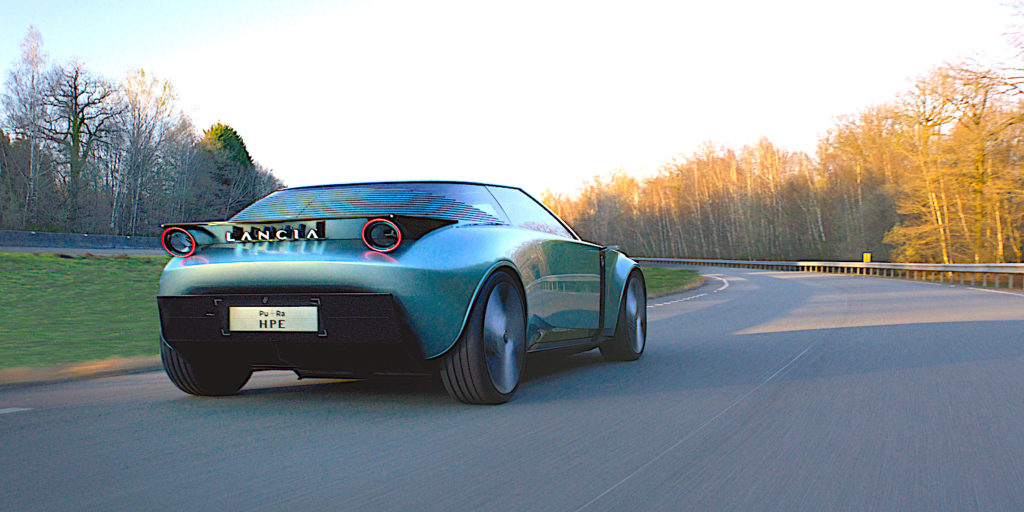
These three products will be three silhouettes only, so there won’t be any spin-offs for one or more of them?
“What has been announced are three silhouettes only, and even if we’re not immune to a surprise, these three silhouettes remain our current objective.”
Back to the architecture, with the handicap of housing a battery pack more than 10 cm deep in the floor. We can see that with recent creations (particularly the Scénic), this has an impact on on-board architecture. Is this a constraint?
“There are two solutions: either you take it as a constraint, or as an opportunity. We’ve moved other components elsewhere in the architecture. That’s going to generate a lot of surprises, particularly on the dashboard, with new spaces opening up. In addition, the impact structures are different and involve a number of components, such as the crossmembers, fascias and apron. Everything changes, and that gives us the opportunity to put elements elsewhere. Architecture is changing!”
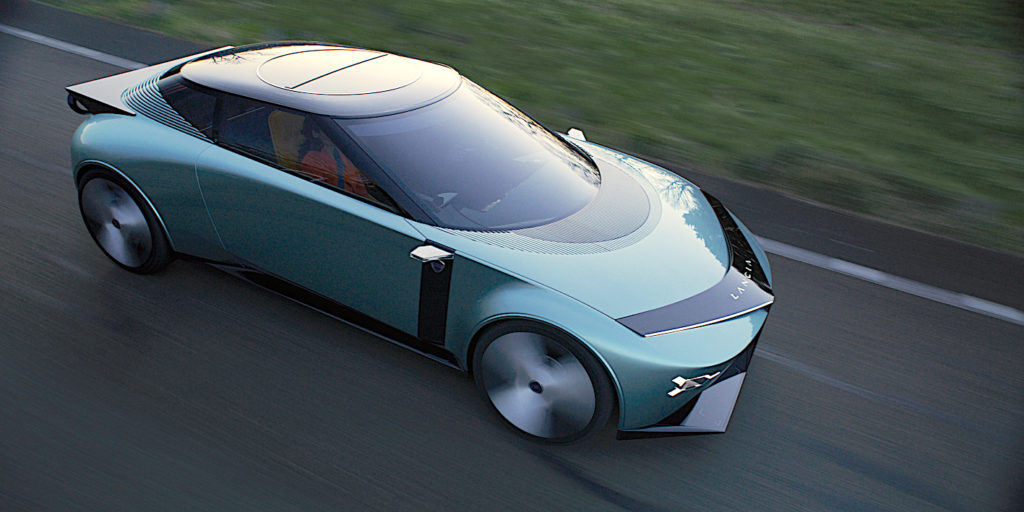
The electric car seems to have made you rediscover aerodynamics!
“It’s not a rediscovery for us, it’s vital! It’s like architecture with batteries, it’s a playground. We’re embracing it to get the full potential out of it and create an interesting, expressive design.”
But your concept car does without the famous straight and vertical planes that are found almost everywhere today and which improve aerodynamics?
“There are two schools of thought when it comes to aerodynamics: the school of sharp edges and the school of curvature. We’ve opted for the latter, particularly for the muscular rear section. This is the school that Porsche is also following with its 911, and it seems to me that their car is efficient and drives fast! On our concept, you have the winding of the air streams on the longitudinal part (in 1 below), low and high, then there is the frank cut of the air thanks to the horizontal spoiler (2) and below, there is the diffuser which is a collector of air which reduces the SCx (3). Then there are the aerodynamic wheels (4) with their aero flanges.”
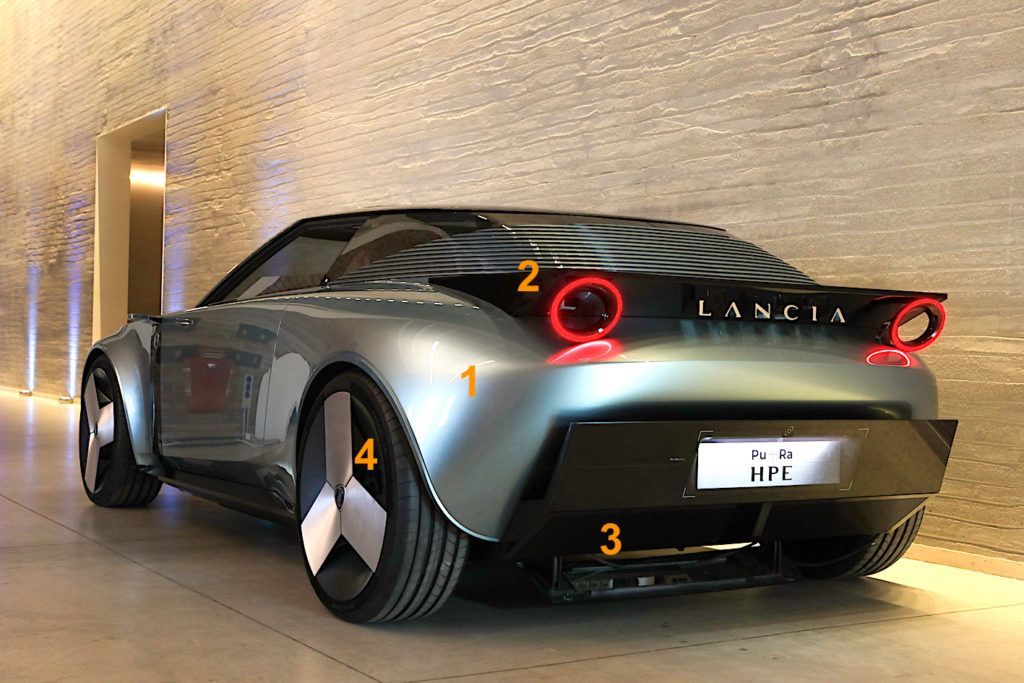
The LIGNES/auto bonus
Lancia design is almost a breeding ground for Rubika alumni! Rubika is a digital design college specialising in video games, animated films and industrial design, with 5 campuses in Valenciennes: https://rubika-edu.com/
While Laura Brunet, the latest addition to Lancia’s design team in the materials and colours department, comes from the FCA (Fiat Chrysler Automobile) group and trained at the Politecnico di Torino, most of the designers come from the Rubika school. Maxime Mielot, who has been on placement since March, is from the class of 2018-2023; Quentin Duflos, junior designer in interior styling, also trained there, as did Clément Lacour (exterior design) and even Teddy Trinchero in exterior design since 2021. Shreyas Dalvi, in interior design, is no exception.
Axel Verquin, in charge of interior styling at Lancia since March 2021, also studied at Valenciennes, but at the Institut Supérieur de Design. LIGNES/auto adds the name of Bocsi Attila, chief designer at Lancia since May 2021, because the book “Concept cars and prototypes from Peugeot studies” (see video above) revealed one of the secret projects carried out at the time at Peugeot: a small urban SUV below, derived from a Mitsubishi model and capable of replacing the Peugeot 1008. This was in 2008…
